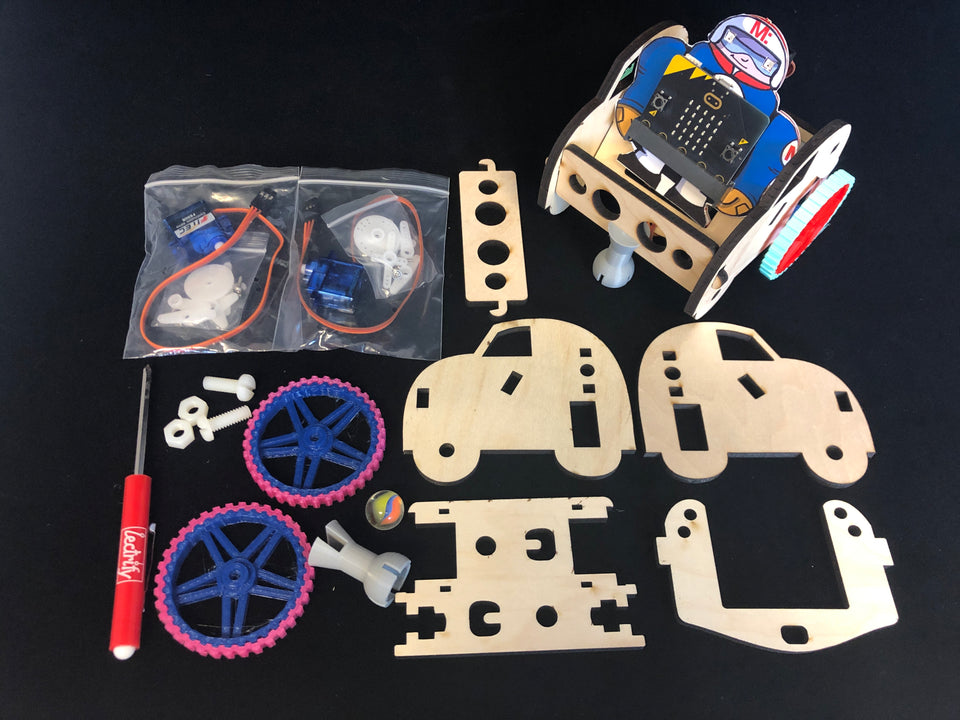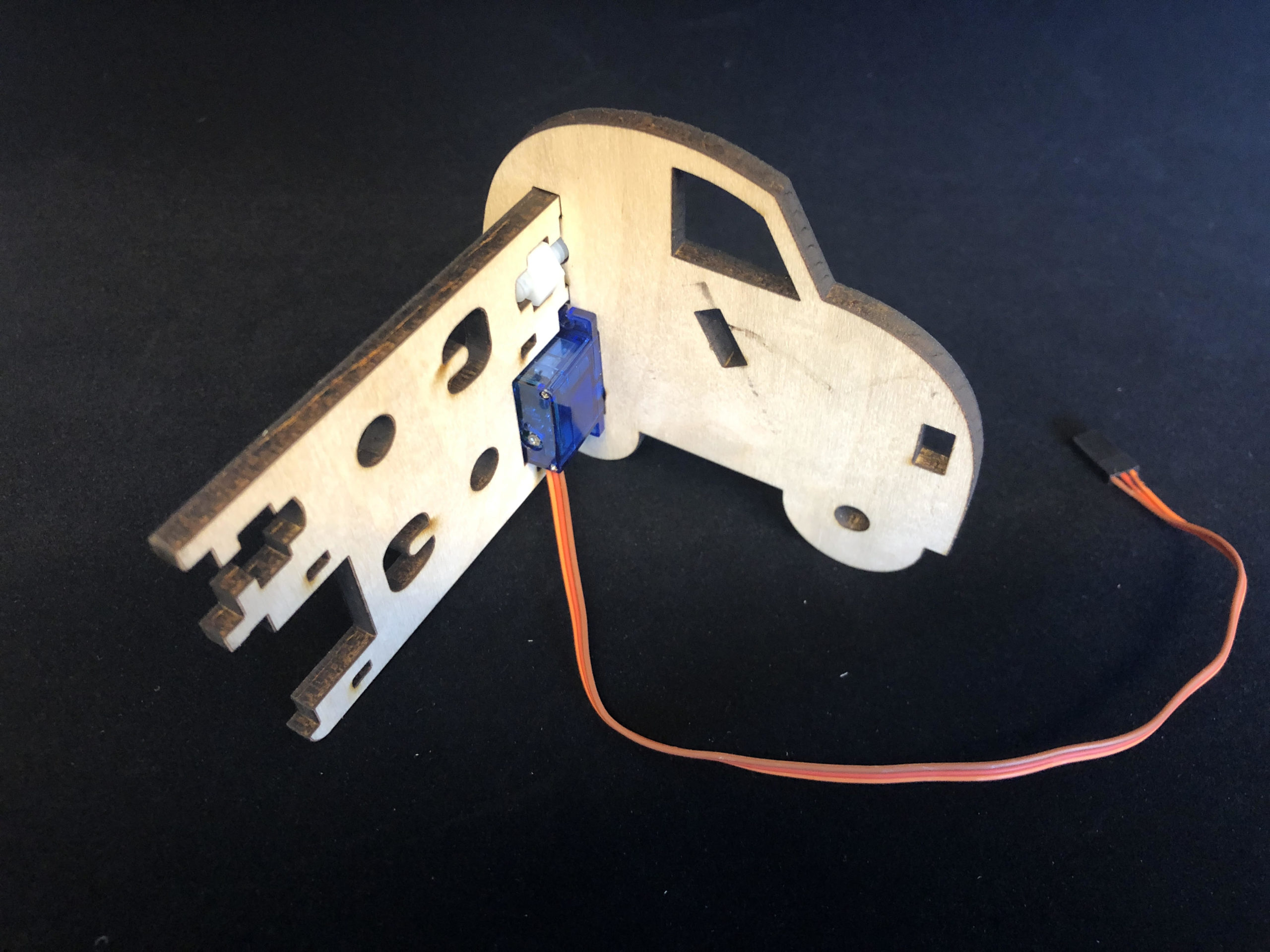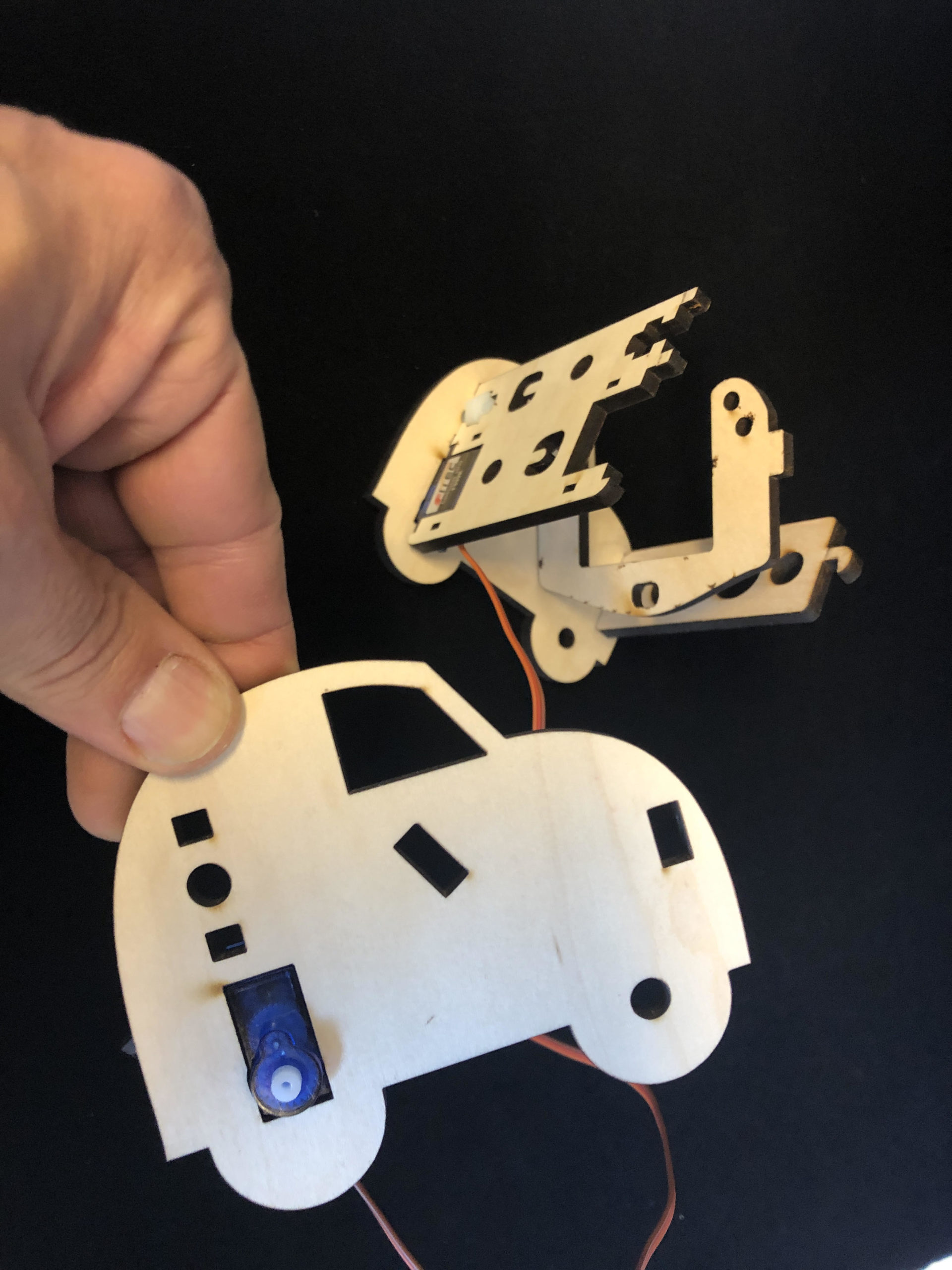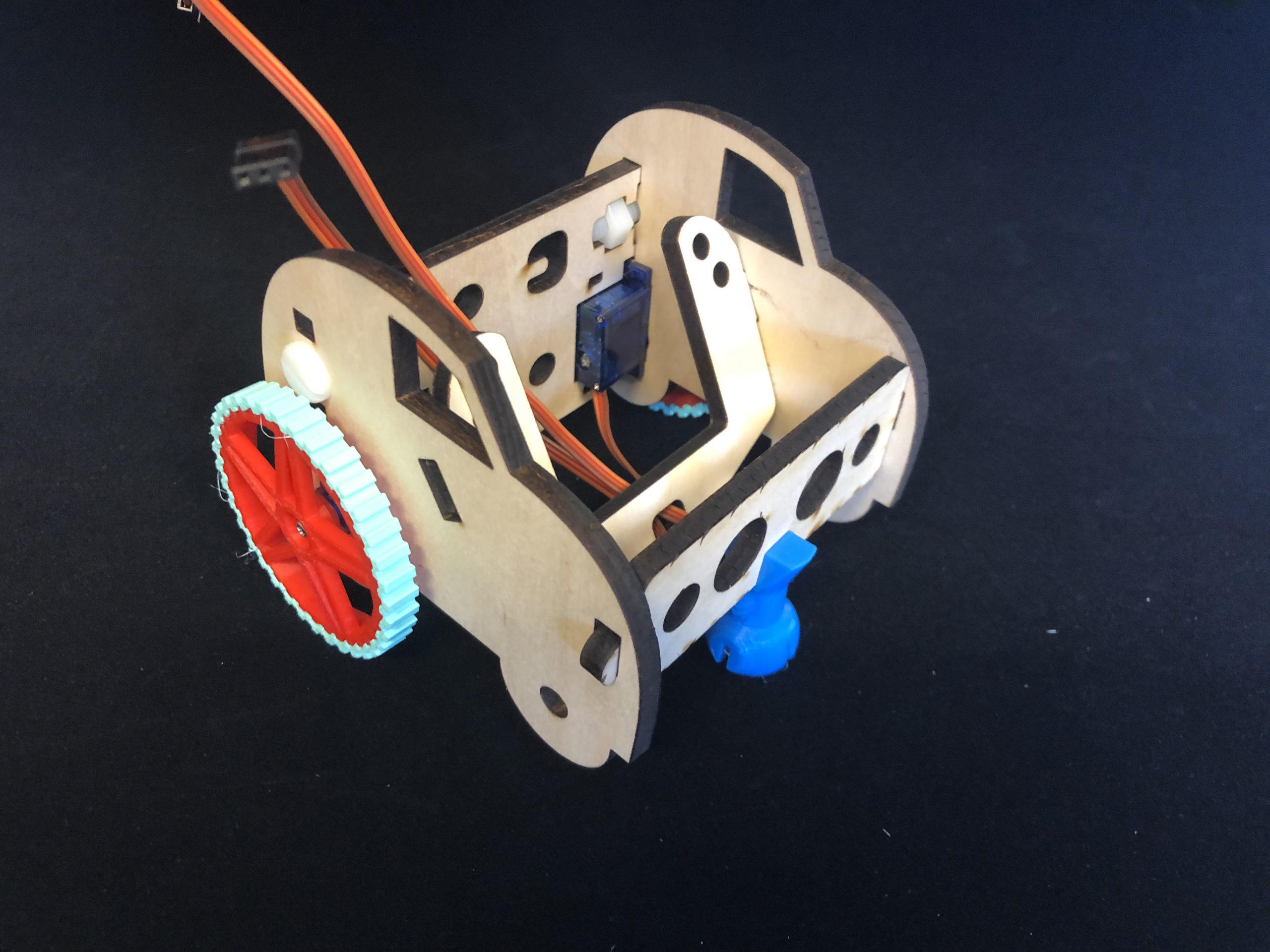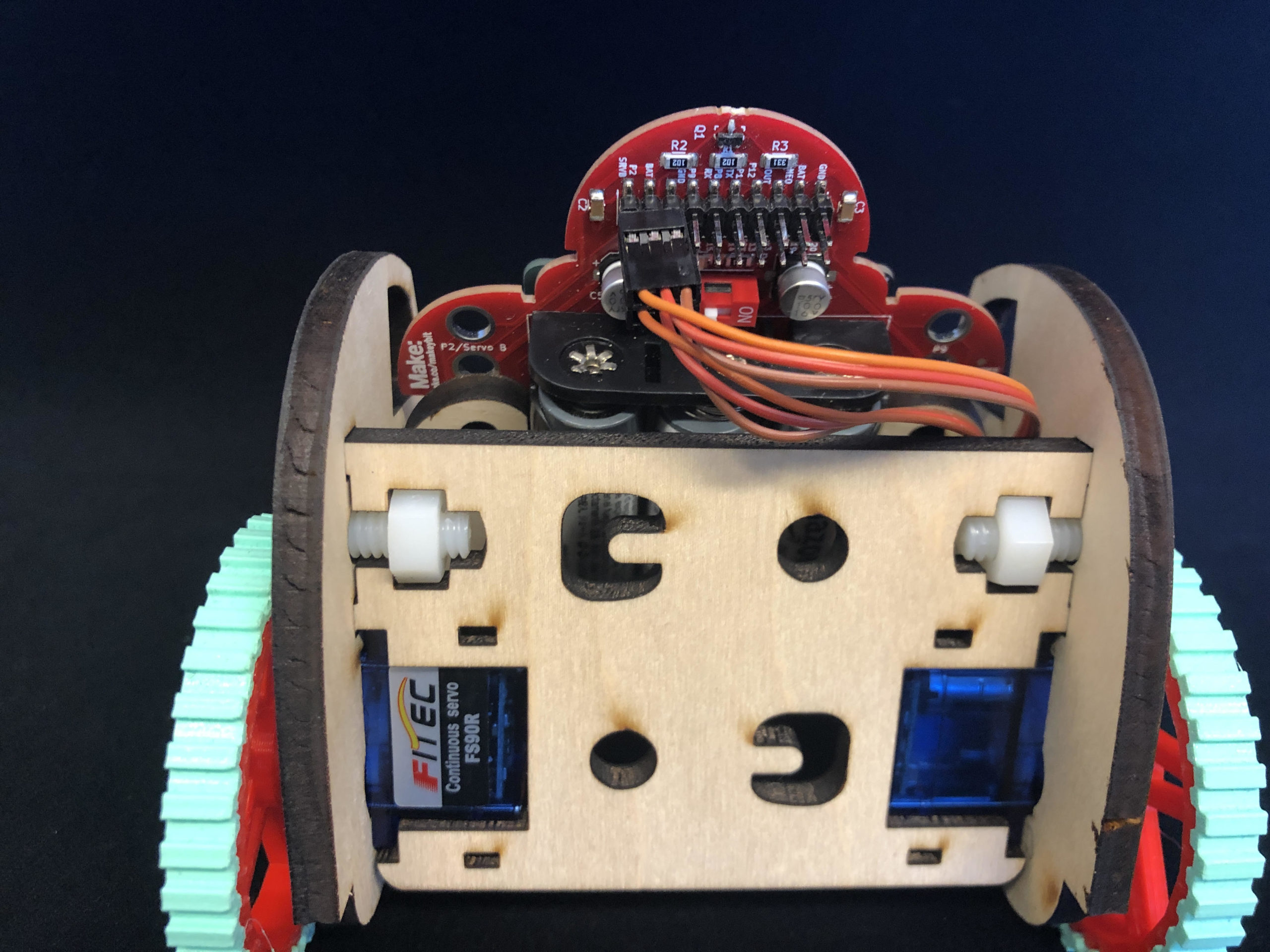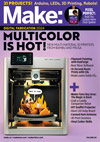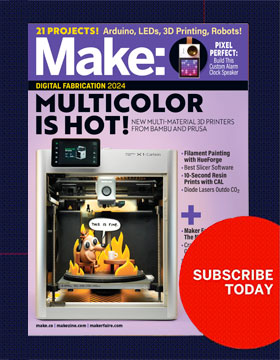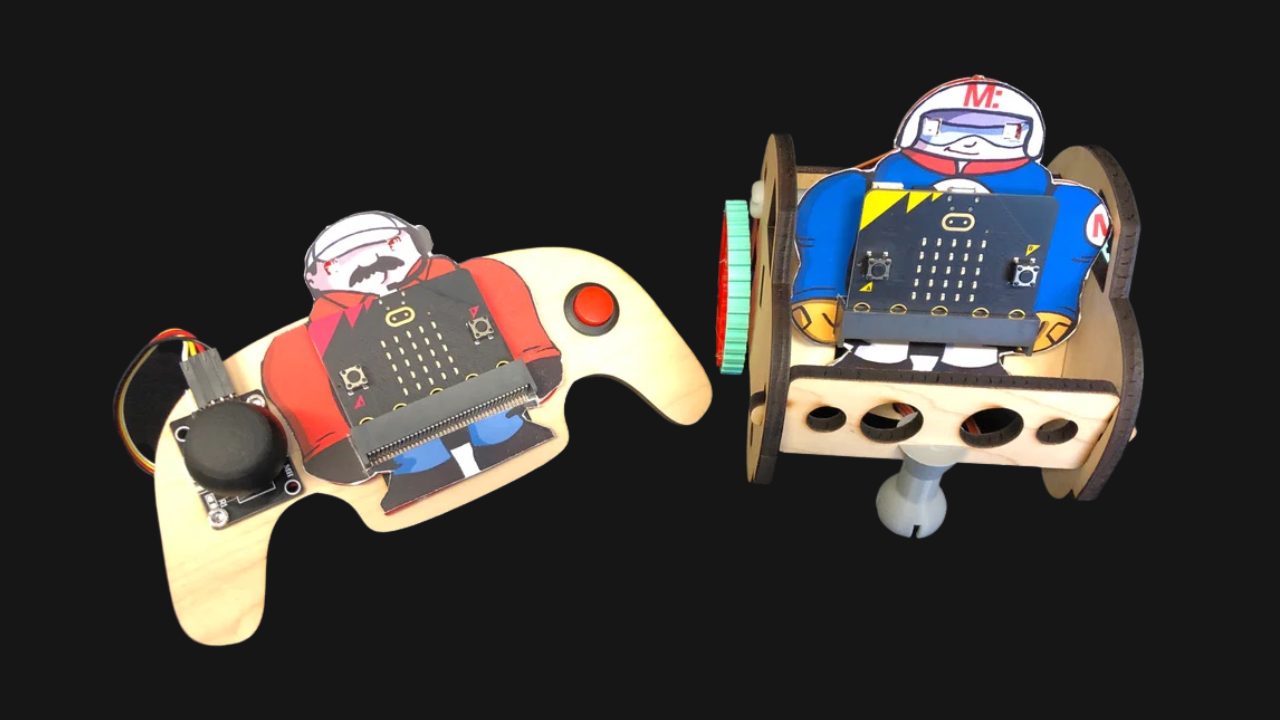Maker Camp Project Standards
Based on NGSS (Next Generation Science Standards)
NGSS (Next Generation Science Standards)
The Next Generation Science Standards (NGSS) are K–12 science content standards. Learn more.
Forces and Motion
3-PS2-3. Ask questions to determine cause and effect relationships of electric or magnetic interactions between two objects not in contact with each other.
HS-PS4-5. Communicate technical information about how some technological devices use the principles of wave behavior and wave interactions with matter to transmit and capture information and energy.
CCSS (Common Core State Standards)
The Common Core is a set of high-quality academic standards in mathematics and English language arts/literacy (ELA).
Measurement & Data
Grades K-2
CCSS.MATH.CONTENT.K.MD.A.1 Describe measurable attributes of objects, such as length or weight. Describe several measurable attributes of a single object.
CCSS.MATH.CONTENT.1.MD.A.1 Order three objects by length; compare the lengths of two objects indirectly by using a third object.
CCSS.MATH.CONTENT.1.MD.A.2 Express the length of an object as a whole number of length units, by laying multiple copies of a shorter object (the length unit) end to end; understand that the length measurement of an object is the number of same-size length units that span it with no gaps or overlaps.
CCSS.MATH.CONTENT.2.MD.A.1 Measure the length of an object by selecting and using appropriate tools such as rulers, yardsticks, meter sticks, and measuring tapes.
CCSS.MATH.CONTENT.2.MD.A.2 Measure the length of an object twice, using length units of different lengths for the two measurements; describe how the two measurements relate to the size of the unit chosen.
CCSS.MATH.CONTENT.2.MD.A.3 Estimate lengths using units of inches, feet, centimeters, and meters.
CCSS.MATH.CONTENT.2.MD.A.4 Measure to determine how much longer one object is than another, expressing the length difference in terms of a standard length unit.
Grades 3-5
CCSS.MATH.CONTENT.3.MD.B.3 Draw a scaled picture graph and a scaled bar graph to represent a data set with several categories. Solve one- and two-step "how many more" and "how many less" problems using information presented in scaled bar graphs.
CCSS.MATH.CONTENT.4.MD.A.1 Know relative sizes of measurement units within one system of units including km, m, cm; kg, g; lb, oz.; l, ml; hr, min, sec. Within a single system of measurement, express measurements in a larger unit in terms of a smaller unit.
CCSS.MATH.CONTENT.4.MD.C.5 Recognize angles as geometric shapes that are formed wherever two rays share a common endpoint, and understand concepts of angle measurement.
CCSS.MATH.CONTENT.5.MD.A.1 Convert among different-sized standard measurement units within a given measurement system (e.g., convert 5 cm to 0.05 m), and use these conversions in solving multi-step, real world problems.
CCSS.MATH.CONTENT.5.MD.C.3 Recognize volume as an attribute of solid figures and understand concepts of volume measurement.
Ratios & Proportional Relationships
Middle School
CCSS.MATH.CONTENT.6.RP.A.1 Understand the concept of a ratio and use ratio language to describe a ratio relationship between two quantities.
CCSS.MATH.CONTENT.6.RP.A.3 Use ratio and rate reasoning to solve real-world and mathematical problems, e.g., by reasoning about tables of equivalent ratios, tape diagrams, double number line diagrams, or equations.
CCSS.MATH.CONTENT.7.RP.A.1 Compute unit rates associated with ratios of fractions, including ratios of lengths, areas and other quantities measured in like or different units.
CCSS.MATH.CONTENT.7.RP.A.2 Recognize and represent proportional relationships between quantities.
K–12 Computer Science Framework
The K–12 Computer Science Framework is designed to guide computer science from a subject for the fortunate few to an opportunity for all.
The guiding practices include:
Fostering an Inclusive Computing Culture
Collaborating Around Computing
Recognizing and Defining Computational Problems
Developing and Using Abstractions
Creating Computational Artifacts
Testing and Refining Computational Artifacts
Communicating About Computing
You can download the complete framework
here.
You may also want to consider the International Society for Technology in Education Standards. The
ISTE Standards provide the competencies for learning, teaching and leading in the digital age, providing a comprehensive roadmap for the effective use of technology in schools worldwide.
ISTE Standards (International Society for Technology in Education)
The ISTE Standards provide the competencies for learning, teaching and leading in the digital age, providing a comprehensive roadmap for the effective use of technology in schools worldwide.
1.1 Empowered Learner
Summary: Students leverage technology to take an active role in choosing, achieving, and demonstrating competency in their learning goals, informed by the learning sciences.
1.1.a Students articulate and set personal learning goals, develop strategies leveraging technology to achieve them and reflect on the learning process itself to improve learning outcomes.
1.1.b Students build networks and customize their learning environments in ways that support the learning process.
1.1.c Students use technology to seek feedback that informs and improves their practice and to demonstrate their learning in a variety of ways.
1.1.d Students understand the fundamental concepts of technology operations, demonstrate the ability to choose, use and troubleshoot current technologies and are able to transfer their knowledge to explore emerging technologies.
1.2 Digital Citizen
Summary: Students recognize the rights, responsibilities and opportunities of living, learning and working in an interconnected digital world, and they act and model in ways that are safe, legal and ethical.
1.2.a Students cultivate and manage their digital identity and reputation and are aware of the permanence of their actions in the digital world.
1.2.b Students engage in positive, safe, legal and ethical behavior when using technology, including social interactions online or when using networked devices.
1.2.c Students demonstrate an understanding of and respect for the rights and obligations of using and sharing intellectual property.
1.2.d Students manage their personal data to maintain digital privacy and security and are aware of data-collection technology used to track their navigation online.
1.3 Knowledge Constructor
Summary: Students critically curate a variety of resources using digital tools to construct knowledge, produce creative artifacts and make meaningful learning experiences for themselves and others.
1.3.a Students plan and employ effective research strategies to locate information and other resources for their intellectual or creative pursuits.
1.3.b Students evaluate the accuracy, perspective, credibility and relevance of information, media, data or other resources.
1.3.c Students curate information from digital resources using a variety of tools and methods to create collections of artifacts that demonstrate meaningful connections or conclusions.
1.3.d Students build knowledge by actively exploring real-world issues and problems, developing ideas and theories and pursuing answers and solutions.
1.4 Innovative Designer
Summary: Students use a variety of technologies within a design process to identify and solve problems by creating new, useful or imaginative solutions.
1.4.a Students know and use a deliberate design process for generating ideas, testing theories, creating innovative artifacts or solving authentic problems.
1.4.b Students select and use digital tools to plan and manage a design process that considers design constraints and calculated risks.
1.4.c Students develop, test and refine prototypes as part of a cyclical design process.
1.4.d Students exhibit a tolerance for ambiguity, perseverance and the capacity to work with open-ended problems.
1.5 Computational Thinker
Summary: Students develop and employ strategies for understanding and solving problems in ways that leverage the power of technological methods to develop and test solutions.
1.5.a Students formulate problem definitions suited for technology-assisted methods such as data analysis, abstract models and algorithmic thinking in exploring and finding solutions.
1.5.b Students collect data or identify relevant data sets, use digital tools to analyze them, and represent data in various ways to facilitate problem-solving and decision-making.
1.5.c Students break problems into component parts, extract key information, and develop descriptive models to understand complex systems or facilitate problem-solving.
1.5.d Students understand how automation works and use algorithmic thinking to develop a sequence of steps to create and test automated solutions.
NGSS MS.Engineering Design
The Next Generation Science Standards (NGSS) are K–12 science content standards.
MS-ETS1-1. Define the criteria and constraints of a design problem with sufficient precision to ensure a successful solution, taking into account relevant scientific principles and potential impacts on people and the natural environment that may limit possible solutions.
MS-ETS1-2. Evaluate competing design solutions using a systematic process to determine how well they meet the criteria and constraints of the problem.
MS-ETS1-3. Analyze data from tests to determine similarities and differences among several design solutions to identify the best characteristics of each that can be combined into a new solution to better meet the criteria for success.
MS-ETS1-4. Develop a model to generate data for iterative testing and modification of a proposed object, tool, or process such that an optimal design can be achieved.
For additional information on using content standards with our projects please visit the
Maker Camp Playbook.
NGSS HS.Engineering Design
The Next Generation Science Standards (NGSS) are K–12 science content standards.
HS-ETS1-1. Analyze a major global challenge to specify qualitative and quantitative criteria and constraints for solutions that account for societal needs and wants.
HS-ETS1-2. Design a solution to a complex real-world problem by breaking it down into smaller, more manageable problems that can be solved through engineering.
HS-ETS1-3. Evaluate a solution to a complex real-world problem based on prioritized criteria and trade-offs that account for a range of constraints, including cost, safety, reliability, and aesthetics as well as possible social, cultural, and environmental impacts.
HS-ETS1-4. Use a computer simulation to model the impact of proposed solutions to a complex real-world problem with numerous criteria and constraints on interactions within and between systems relevant to the problem.
For additional information on using content standards with our projects please visit the
Maker Camp Playbook.
NGSS 3-5.Engineering Design
The Next Generation Science Standards (NGSS) are K–12 science content standards.
3-5-ETS1-1. Define a simple design problem reflecting a need or a want that includes specified criteria for success and constraints on materials, time, or cost.
3-5-ETS1-2. Generate and compare multiple possible solutions to a problem based on how well each is likely to meet the criteria and constraints of the problem.
3-5-ETS1-3. Plan and carry out fair tests in which variables are controlled and failure points are considered to identify aspects of a model or prototype that can be improved.
For additional information on using content standards with our projects please visit the
Maker Camp Playbook.
